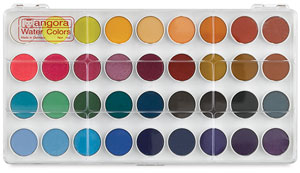I found a lady on YouTube who creates Dreamscapes with Yupo and alcohol inks. Her name is June Rollins, here are some of her artworks:


Guess what, no brushes needed!
If you have alcohol inks, but no Yupo, you can try the techniques on Glossy paper instead, it works fine!
If you have no alcohol inks, why not try creating a similar Dreamscape scene using watercolour paints. Be brave with your colour choices.
Here are the two videos I found the most helpful:
A couple of other ideas I figured out:
- use a straw to blow ink or the alcohol around
- use a toothpick to apply ink or alcohol in fine lines
Here are my Yupo paper Dreamscapes. They are sized 15.5 x 11.5 cm (quarter of A4):
Colours I used: Sunset Orange, Butterscotch, Aqua, Mermaid, Stream, Lettuce, Wild Plum, Cranberry, Eggplant and the Metallic Mixatives Gold and Silver.
and this is my first practice go, done on glossy cardstock
You can see the difference the Yupo makes to the vibrancy of the inks.
I still have another whole piece and a half of Yupo left to play with.




























